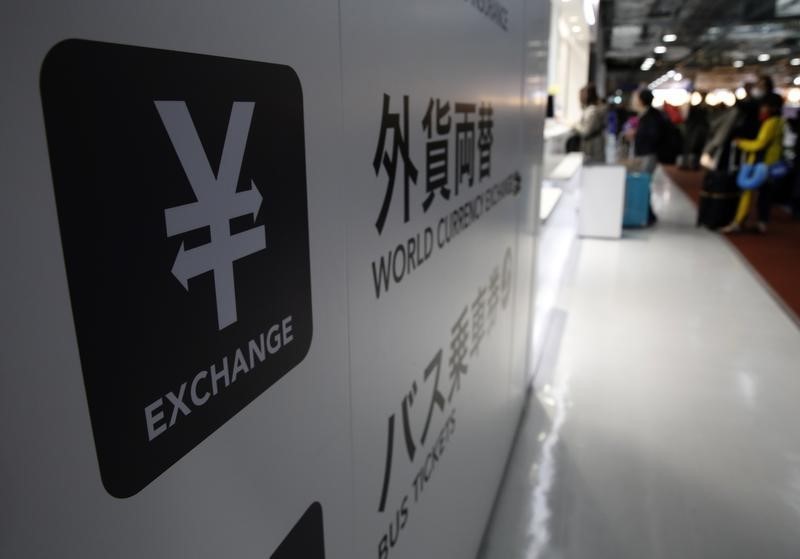By Jamie McGeever
LONDON (Reuters) - Distortions in dollar-based interest rate markets resulting from the U.S. currency's two-year rally pose a growing threat to financial stability, the Bank for International Settlements warned on Wednesday.
Hyun Song Shin, head of research at the BIS, said a breakdown in what is known as covered interest parity and the resulting strains in cross-currency basis rates could have a negative impact across the global financial system.
The Swiss-based BIS acts as a forum for major central banks.
"In spite of the outward tranquillity, there are tensions beneath the surface," Shin told a World Bank conference in Washington.
"The financial tail appears to be wagging the real economy dog. This is not how things are supposed to work. The key takeaway is that a stronger dollar is associated with more severe market anomalies," Shin said.
Covered interest parity theory holds that interest rates implied by foreign exchange trading should be consistent with market interest rates, so that there are no interest rate arbitrage opportunities between the two.
But the current implied dollar interest rate from currency swaps is above Libor, meaning that borrowers of dollars in the FX swap market are paying more than the rate available in the open market. The deviations are notable in euros and Swiss francs, and are particularly large in Japanese yen.
The breakdown of covered interest parity is a symptom of tighter dollar credit conditions putting the squeeze on accumulated dollar liabilities built up during years in which dollar credit was cheap and plentiful, Shin said.
During the period of dollar weakness before 2014, cross-border dollar credit grew strongly and was easily obtained. But as the dollar strengthens, banks find it more challenging to roll over that debt.
"A weaker dollar is associated with greater lending in dollars, lower volatility and more risk-taking, but a stronger dollar is associated with higher volatility and a recoiling from risk-taking," Shin said.
The difference between U.S. dollar Libor and the FX swap-implied dollar interest rate is the "cross-currency basis". The textbooks say this should be virtually zero, but again there is a notable dollar premium building up, especially versus the yen.
The three-month dollar/yen currency basis is trading around -70 basis points, signifying a 70 bps premium for dollar funding over comparable yen borrowings. It has been around -60 bps or more for most of this year, and neared -100 bps in late 2011.
The dollar has rallied 20 percent against a basket of major currencies since mid-2014, a period that has coincided with more subdued risk-taking across the banking and financial world.
This means that a rising debt burden becomes increasingly difficult to sustain. The stock of dollar-denominated debt of non-banks outside the United States currently stands at $9.7 trillion, of which $3.3 trillion is in emerging markets.
Shin's comments on Wednesday follow similar warnings a month ago from his BIS colleague Claudio Borio that the dollar's overwhelming position of dominance in the global financial system posed risks to world financial stability.
